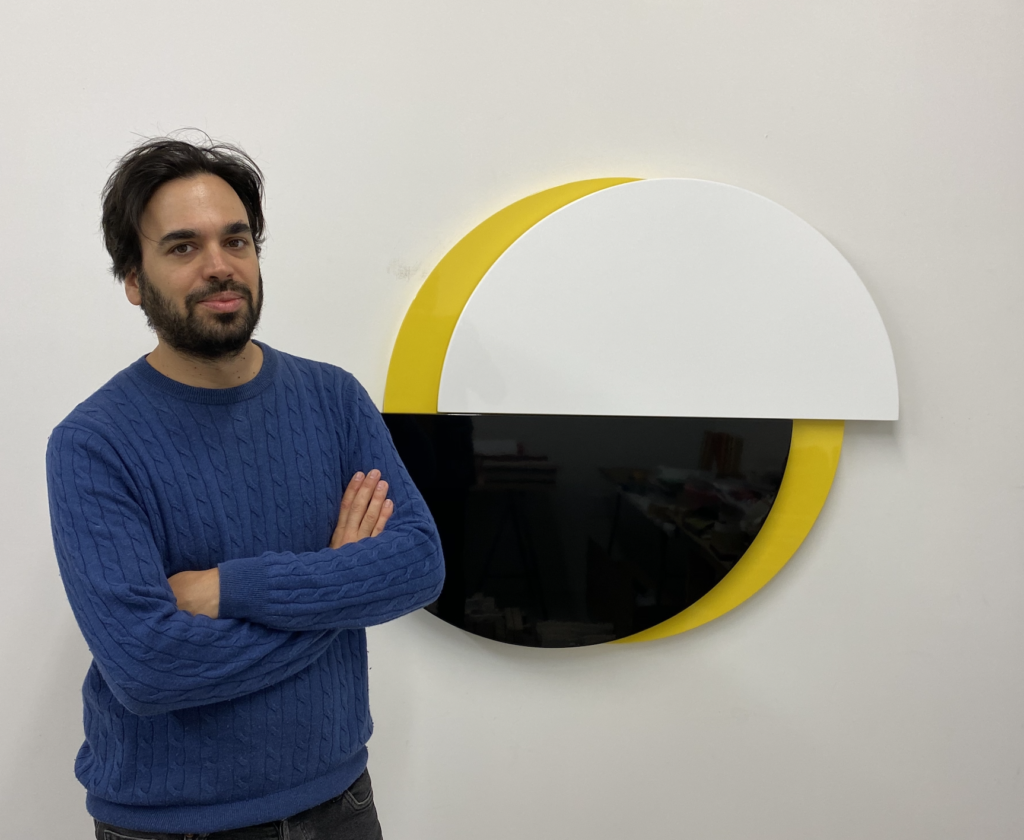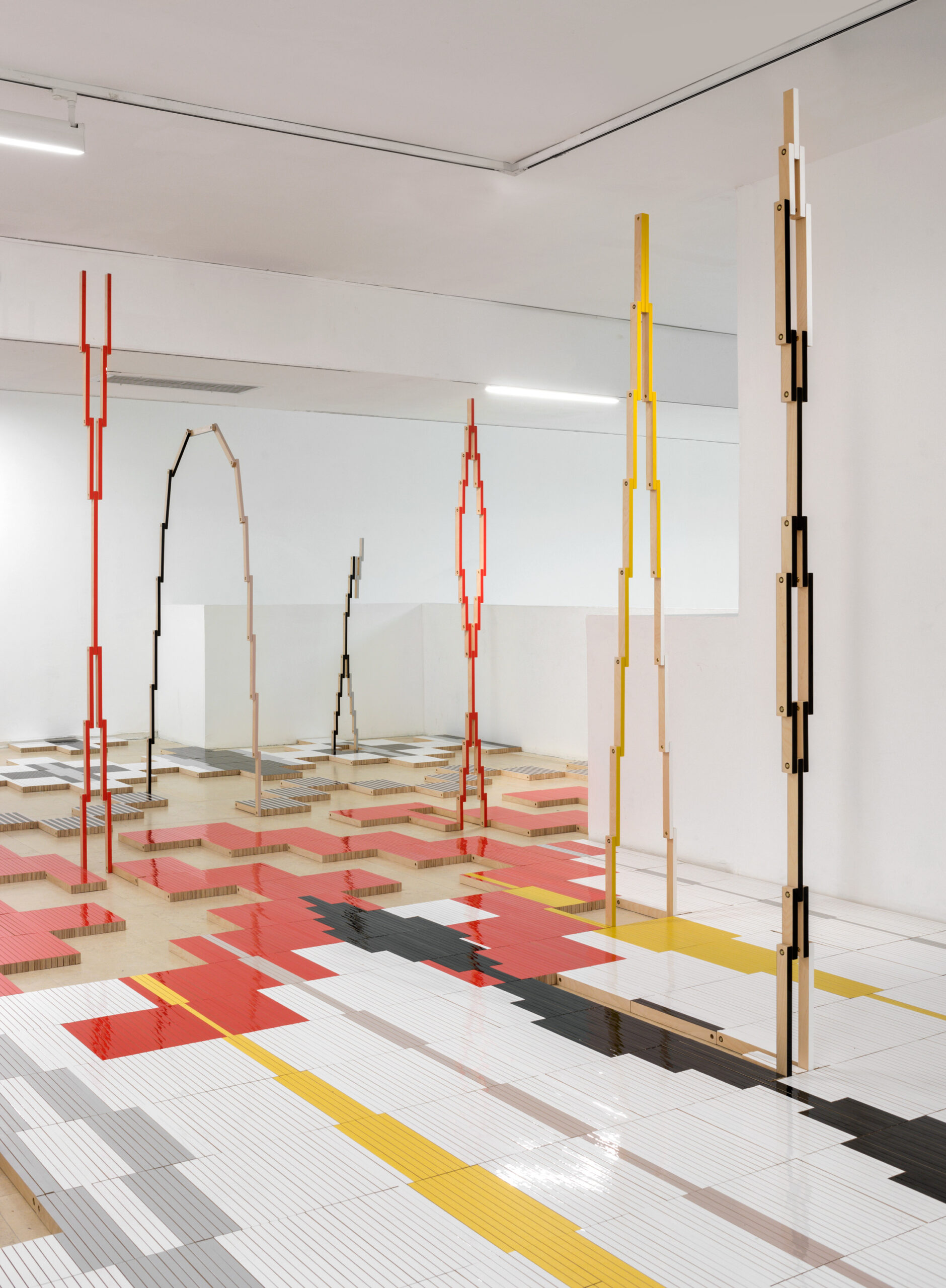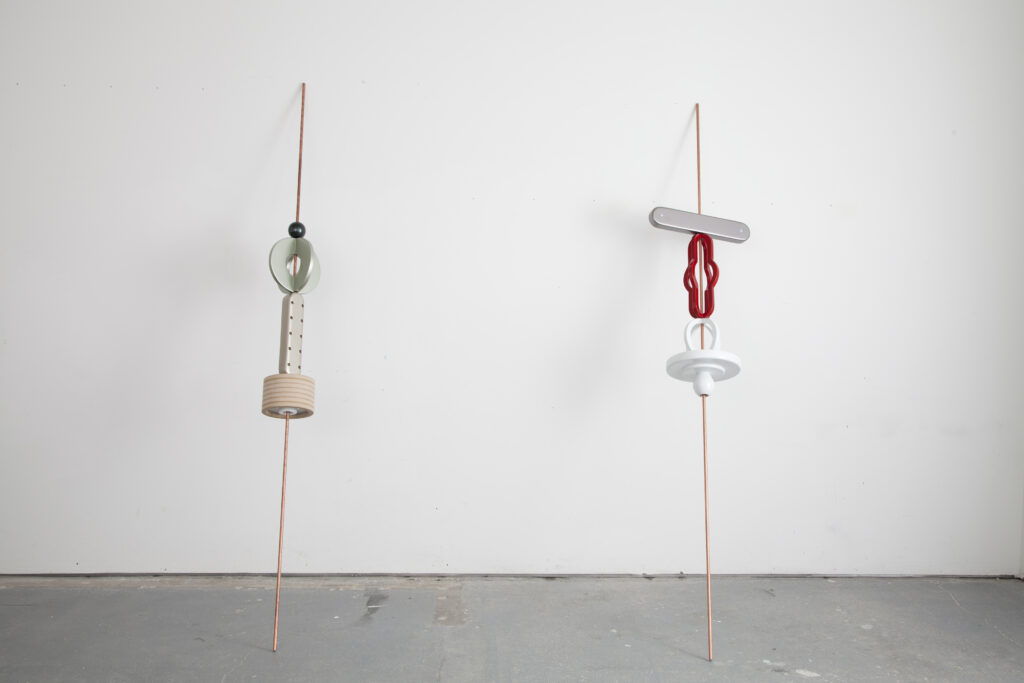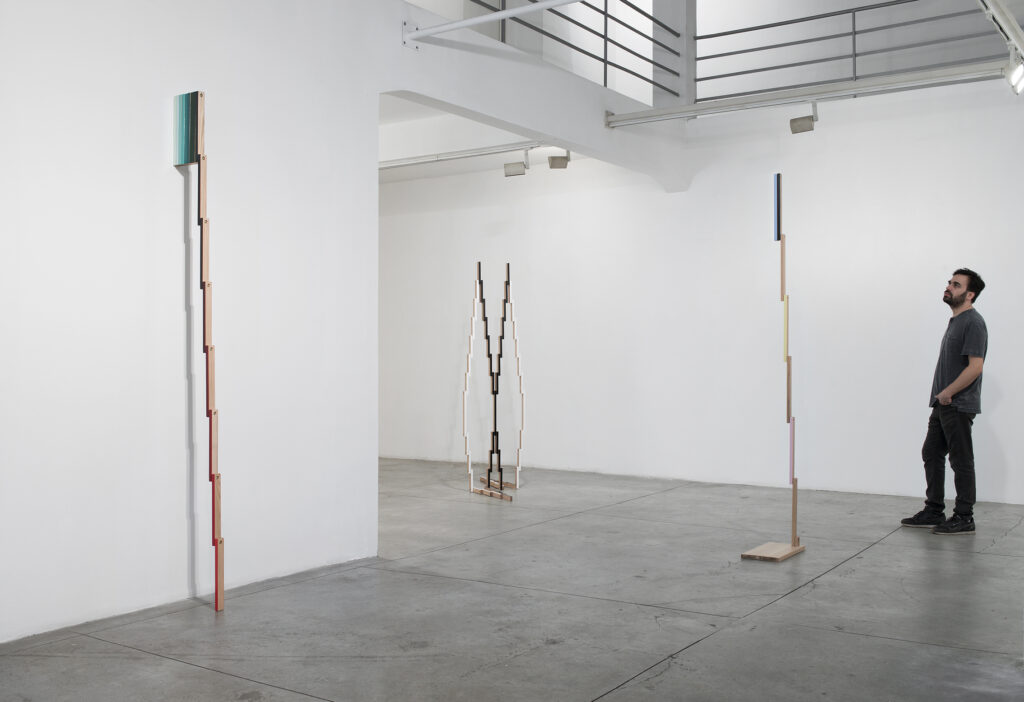April 7, 2022
Artist to Watch
Reuven Israel

NB: What are your earliest memories of art?
RI: I grew up in a religious household, Jewish Orthodox, not Ultra-Orthodox, but modern Orthodox. My mother was on the religious side of the family, and my father was more secular. In this religious background, there wasn’t much visual stimulation. Art in our local Synagogue was limited to attributes to the twelve tribes of Israel and the lions of Judah ornaments on the coverings of the Torah scrolls. On the other hand, I used to accompany my father–who was a Journalist and writer–on his research trips for a guide he was writing on the monasteries in Israel. I would sit in chapels and churches, waiting for him to finish interviewing a monk in the back room. These spaces were in contrast to my Jewish upbringing, full of forbidden artifacts, statues, depictions of Mary, Jesus and saints. Everything was radiating a forbidden sense wrapped in the smell of incense and damp corners, hundreds of years old.
In regard to Western Art, I think the first painting that I was aware of was Hieronymus Bosch’s Garden of Earthly Delights. We had a reproduction of it hanging in our dining room, and as kids, we spent hours finding all these little sexual perversions – all these little anecdotes. When having friends from school over, I was embarrassed by this hanging in our house, but enjoyed seeing their shock.
Growing up, around the age of 17 I started teaching myself oil painting. I was inspired by looking at art books and some museum guides my father had brought back from Europe and America. It was before the internet became what it is now, so to look up paintings, I had to go to bookshops. I used to buy all these handbooks, these Taschen volumes about artists. I was obsessed! I would stare at them endlessly and read everything. Many of my thoughts emerged from art history and looking at these books and artworks reproductions. Then, one day, I realized there was a museum not too far from me, the Israel Museum in Jerusalem. It dawned on me that I could go and see some of these paintings in their original form. My memories from childhood of the museum were of the archaeological parts – like seeing the Dead Sea Scrolls. I hadn’t realized that they had a European painting collection – and they have quite an impressive one! It was amazing, and I went many, many times. Those were my first memories. Later on, in my early twenties, I traveled to Europe to see Caravaggio in Rome and Vermeer in Amsterdam.

NB: Could you speak to your source of inspiration for your practice? I’ve read that concepts such as religious monuments and science fiction have had an impact on your work.
RI: I can draw a thread from my practice now, back to when I started my interest in sculpture more than 15 years ago. There is this very gradual evolution in my work, both of the forms and the conceptual framework. Like scaffoldings, each new body of work is built upon the previous one. Religion has been an ongoing inspiration, rooted in the fetish quality of the works. I used to work a lot with MDF and manipulate it to look like different materials, such as plastic and metal. This fetish treatment of endlessly sanding and caressing the forms avoked this feeling of sanctity in the final objects. It took me back to my personal story, sitting in churches and staring at religious architecture and artifacts. I incorporated into my work particular geometries relating to specific places in Jerusalem. I was trying to decode the feeling of sanctity that certain objects and places have and use it as a means inside the pieces I create. Planting this religious “DNA,” provoking an aura of sanctity in pieces that look like they relate to mass production and furniture, that seems to almost have a functional purpose, but then again, you’re not quite sure what.
In addition to looking more and more into religion, science fiction started to evolve as another source of inspiration. My sculptures often felt like they had landed on the gallery floor from outer space, which led me to do watercolor studies of the shapes I was working on, drawn on large blackened sheets of paper. I draw sculptural elements as if hovering without gravity on the black surface of the paper, peculiar alien forms floating in space. Some of these studies became actual sculptures, and most didn’t. I then started looking further into sci-fi to make the pieces reflect this alien feeling even more. I went on a ‘sci-fi diet’ for a few years, where I mostly read sci-fi books and watched sci-fi movies and TV series – I was trying to break down that language. I wanted to see how this visual diet would come out in my work. Looking into sci-fi somehow took me back again to religion and archaeology. The original elements that drew me to sci-fi (or made my objects look a bit sci-fi) were such because I was looking at the same things for inspiration as people interested in sci-fi were. There is this paradox in sci-fi wherein trying to imagine the future and far away alien civilizations. Instead of looking forward, one looks back to history, to periods like the Middle Ages or ancient Egypt.
In the folding objects series that I’m working on now, a very specific geometry is created when the pieces open and close. This geometric language reminded me of weaving, specifically native American indigenous weavings. I started looking into Navajo rugs and then into designs on Hopi ceramics, trying to understand why this language that I’m working on suddenly has this association with these cultures. No doubt that this exploration influenced the shapes I created. From this exploration, I understood the connection between the mythological framework behind the indigenous patterns to my personal experiences, participating in shamanic ceremonies, relating to what I believe to be linked to this visual language.

NB: I know you use a wide range of materials in your pieces. How do you think about these different substances in the creation of your work? What do the interactions between the materials mean to you in your practice?
RI: When I started experimenting with sculpture, I wanted to imitate plastic. I didn’t want to work with plastic, and I didn’t want to cast plastic. I wanted to work with a material pretending it is plastic. This led me to MDF. By sanding it in a certain way, rounding the edges, and coating it with paint, it could take on the appearance of different materials. I like the basic idea in art that a thing is not what it represents, taking something and making it look like something else. I was interested in representation, but without representing a figurative depiction. I didn’t see a reason for sculptures to represent something else because they are already objects in the world. Why should one object represent another object?! Why couldn’t it just be itself ?! At the same time, I didn’t want my work to lose a relationship to concrete things in the world entirely. One of the core relationships I maintain is representing material almost as an image. Plastic and all of these sleek surfaces that surround us come with their luggage; they have a subtext. Plastic is taking over the world! This artificial material has a seed of destruction.
When you look at a lot of my pieces, the material itself is a piece of the puzzle, and it’s not what you think it is. There is a distance between what the sculpture is talking about and how it looks. It’s deceiving your senses and your thoughts. I still work with MDF but less and less. I also started using materials that spoke the same language. I found these metal rods used for grounding electricity. They are made of steel coated with a thin layer of copper, relating to my logic of painting things to hide them. I bought a bunch of these rods, and I started skewering sculptural elements on them. Individual wooden elements come together as a sculpture, a visual poem.
When I started the folding pieces, I initially continued with similar logic and painted their edges in color spectrums, reaching from green to red through small gradual color changes. A couple of years ago, I started work on a site-specific installation for the CCA in Tel Aviv that required 5,000 segments of wood. To paint 5,000 segments of wood is ridiculous! I also wanted people to walk on the piece without scratching or damaging it. I found an edge banding technique to apply a very thin layer of colored PVC on the wood. Nowadays, I use this technic to create large-scale immersive installations.

NB: Do you have any upcoming exhibitions or projects that you’d like to share?
RI: I just had two solo shows recently. One was at Shulamit Nazarian Gallery in Los Angeles, and the other was at the Center of Contemporary Art in Tel Aviv, which I just mentioned.
When I was invited to propose a piece for the Center of Contemporary Art, I had just finished working on folding sculptures that could unfold into different shapes and forms and shift in scale from flat rectangular shapes into large geometric patterns in the space. I decided to tile an entire gallery with thousands of wood segments connected to each other. From the interconnected tiled floor, I pulled groups of segments that opened up into three-dimensional structures, leaving empty swathes of the bare floor beneath them: an intricate game between two and three-dimensional patterns, resembling a digital space coming to life. To enter, one had to walk on the art. This took me back to religious ideas – like, taking off your shoes before entering a mosque or temple.
At the same time, I had another show in Los Angeles, with wall pieces that could also shift. Sleek geometric surfaces moved on tracks, opening from closed shapes into larger geometric landscapes. There were other folding pieces too, hung like rugs on the wall, unfolding down and spilling to the floor, with parts of them rising back up into sculpture in space. I liked the idea of having a floor show on one continent and a wall show on another.
I have two upcoming projects in Istanbul. A solo show in May at Sevil Dolmaci Gallery. The other will be in September, at a non-profit space. It’s a project I’ve been working on for a while, with Panos Tsagaris-A New York-based Greek artist, and Christian Oxenius, an Istanbul-based, German-Italian curator. The project is growing, and a Turkish curator and another Turkish artist are joining. It will be a satellite event during the Istanbul Biennale.


